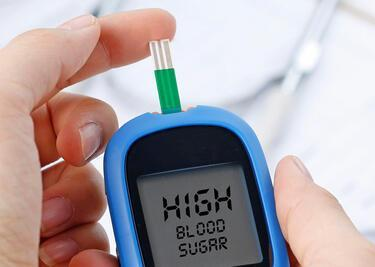Diabetes occurs when the blood sugar level in the human body is too high. It develops when the pancreas is not making insulin at all or the body is not responding to the effects of the insulin properly. The glucose intake is mainly from the carbohydrates that people consume. In fact, many people are experiencing health problems related to diabetes, which are type 1 or type 2. Diabetes can be caused by a few factors, including genetics, lifestyle, and environmental factors. Type 1 and type 2 are different in that they are caused by different factors.
Type 1 diabetes is a chronic autoimmune disease that prevents the pancreas from making insulin. Insulin, an important hormone, has the function of breaking down the food you eat into glucose, which is the brain’s main source of energy. Glucose entering the body signals the pancreas to release insulin, and insulin can be stored for later use. After the process of insulin is over—making the sugar levels in the bloodstream decrease—the pancreas stops producing insulin. However, what would happen if you do not have enough insulin? Serious health problems and even death can result from this. Thus, people who cannot produce insulin themselves need synthetic insulin every day of their lives.
Symptoms of type 1 diabetes might include excessive thirst, frequent urination, excessive hunger, unexplained weight loss, fatigue, and blurred vision. Type 1 diabetes is diagnosed by a blood glucose test and glycosylated hemoglobin test, in addition to an antibody test, basic metabolic panel, urinalysis, and arterial blood gas test. To be specific, a blood glucose test checks the amount of sugar in the blood, and if the results show a very high blood sugar level, it typically means that you have type 1 diabetes. If the blood glucose test indicates that you have diabetes, you will probably be given an A1c test, which is the glycosylated hemoglobin test.
After these two, your healthcare provider would check if you have diabetes-related ketoacidosis, meaning you might also have a serious acute complication of undiagnosed or untreated type 1 diabetes. Unfortunately, type 1 diabetes is currently known to have no particular cure, but scientists are working on possible treatments.
Type 2 diabetes is a disease with chronic conditions of persistently high blood sugar levels (hyperglycemia) because the body cannot use insulin properly, making it hard for the body to function well. Unlike type 1 diabetes, people with type 2 diabetes have insulin, but they are not able to use it effectively. The main cause of type 2 diabetes is insulin resistance. Insulin resistance happens when cells in the muscles, fat, and liver don’t respond as they should to insulin. Since the insulin doesn’t respond properly, the pancreas will try harder to make more insulin in order to overcome the high blood sugar levels. Nevertheless, if the cells become too resistant to insulin and the pancreas cannot generate enough, it leads to type 2 diabetes. Several factors such as genetics, excessive body fat, physical inactivity, and eating highly processed carbohydrates can be the reasons for type 2 diabetes.
Symptoms of type 2 diabetes might include those similar to type 1 diabetes, but usually the onset of type 1 diabetes is sudden, whereas type 2 diabetes appears gradually. To diagnose this type, the healthcare provider would use methods like the fasting plasma glucose test, random plasma glucose test, and A1c test.
Then what are the ways to prevent people from getting type 2 diabetes in the first place? For one thing, you can try to stick to a healthy lifestyle. Regular exercise and a healthy eating plan are worth practicing if you want to keep your body fit as well as prevent yourself from getting diabetes. On the contrary, not only physical traits but also mental health care is important, since stress can negatively affect people. In fact, people with diabetes are two to three times more likely to be depressed and are 20% more likely to be anxious.
Diabetes is a disease related to the inability to manage blood sugar levels. Since there is a strong possibility that diabetes could occur in many people, it is certain that people should be aware of the disease, and that prevention is as important as the process of treatment.
Works Cited
https://my.clevelandclinic.org/health/diseases/7104-diabetes https://my.clevelandclinic.org/health/diseases/21500-type-1-diabetes https://my.clevelandclinic.org/health/diseases/21501-type-2-diabetes
By. Jeonghwa Oh


